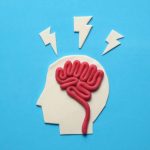Eidetic memory, often referred to as photographic memory, is the ability to recall images, sounds, or objects in great detail after only a few instances of exposure. Although true eidetic memory is rare, eidetic memory training techniques can help improve memory and visualization skills in individuals. This article explores the role of visualization in enhancing eidetic memory and provides practical methods to incorporate visualization into memory training routines.
Understanding Eidetic Memory
Eidetic memory is often misunderstood and conflated with a perfect photographic memory. However, eidetic memory involves the ability to visualize an image vividly for a short period after seeing it. This capability varies among individuals, with children displaying higher instances of eidetic recall than adults. The fleeting nature of eidetic images suggests that while they can be very detailed, they do not last long in the mind.
Characteristics of Eidetic Memory
- Detail and Vividness: The primary characteristic of eidetic memory is the vivid and detailed recall of images. Individuals with eidetic memory can remember intricate details such as colors, shapes, and spatial arrangements.
- Short Duration: Unlike long-term photographic memory, eidetic images are usually retained for a few minutes. After this period, the vividness and detail start to fade.
- Involuntary Recall: Eidetic memory is often involuntary. Individuals do not consciously try to remember; the image remains in their mind naturally for a short duration.
Common Misconceptions
- Photographic Memory: Many people equate eidetic memory with photographic memory, but true photographic memory, where an individual can recall an image in perfect detail indefinitely, is extremely rare.
- Universal Ability: Not everyone possesses eidetic memory. Research suggests that a small percentage of children exhibit this ability, and it tends to diminish with age.
The Science Behind Visualization and Memory
Visualization is the process of creating mental images to represent information. This cognitive process plays a crucial role in memory retention and recall. Visualization activates the brain’s occipital lobes, which are responsible for processing visual information, thereby enhancing memory performance.
How Visualization Enhances Memory
- Engaging Multiple Senses: Visualization involves creating vivid mental images that engage multiple senses, making the information more memorable.
- Enhancing Encoding and Retrieval: By visualizing information, individuals can encode it more effectively and retrieve it more easily.
- Creating Memory Markers: Visualization helps create memory markers, which are cues or images that aid in recalling information.
Neural Mechanisms
- Occipital Lobes: These are activated during visualization and are critical for processing visual information.
- Hippocampus: This region, essential for memory formation, works in conjunction with the occipital lobes during visualization, enhancing memory encoding and retrieval.
Techniques for Eidetic Memory Training
Eidetic memory training involves specific techniques that leverage visualization to improve memory retention and recall. These techniques can be practiced regularly to enhance memory skills.
Mind Mapping
Mind mapping is a visualization technique that involves creating diagrams to represent concepts and their relationships. It helps in organizing information visually, making it easier to remember and retrieve.
Steps to Create a Mind Map
- Central Concept: Start with a central concept or idea.
- Branches: Draw branches from the central concept to related ideas.
- Sub-branches: Add sub-branches to further break down the related ideas.
- Visual Elements: Incorporate colors, images, and symbols to enhance visual appeal and memory retention.
The Method of Loci
The Method of Loci, also known as the memory palace technique, involves visualizing a familiar place and associating information with specific locations within that place. This technique leverages spatial memory to enhance recall.
Steps to Use the Method of Loci
- Choose a Familiar Place: Select a place you know well, such as your home or a route you frequently travel.
- Identify Key Locations: Identify specific locations or landmarks within this place.
- Associate Information: Visualize placing pieces of information at each location.
- Recall: To recall the information, mentally walk through the familiar place and retrieve the information from each location.
Visualization Exercises
Regular visualization exercises can help strengthen the brain’s ability to create and recall vivid images.
Basic Visualization Exercise
- Relax: Find a quiet place and relax.
- Focus: Choose a simple object to visualize, such as a fruit or a geometric shape.
- Observe: Look at the object closely, noting its details.
- Close Your Eyes: Close your eyes and try to visualize the object in as much detail as possible.
- Practice: Repeat this exercise with different objects to improve your visualization skills.
Using Mnemonics
Mnemonics are memory aids that use visualization to help remember information. They can be particularly useful in eidetic memory training.
Creating Mnemonics
- Create a Visual Image: Form a vivid image in your mind that represents the information you want to remember.
- Link Information: Link the visual image with the information you need to recall.
- Practice: Regularly practice using mnemonics to enhance memory retention.
Practical Applications of Visualization in Everyday Life
Visualization techniques can be applied in various aspects of everyday life to improve memory and cognitive performance.
Academic Learning
Students can use visualization techniques to enhance their study habits and improve academic performance.
Techniques for Students
- Visual Notes: Create visual notes with diagrams, mind maps, and symbols.
- Visualization in Reading: Visualize the content while reading to improve comprehension and retention.
- Memory Palaces: Use memory palaces to remember facts, figures, and complex concepts.
Professional Settings
Professionals can benefit from visualization techniques to improve productivity and efficiency at work.
Techniques for Professionals
- Presentation Preparation: Use visualization to rehearse presentations and speeches.
- Project Planning: Create visual project plans and timelines to organize tasks.
- Problem-Solving: Visualize different scenarios and solutions to enhance problem-solving skills.
Personal Development
Visualization can be a powerful tool for personal development and self-improvement.
Techniques for Personal Development
- Goal Setting: Visualize your goals and the steps needed to achieve them.
- Stress Management: Use visualization techniques to manage stress and promote relaxation.
- Positive Thinking: Visualize positive outcomes to boost confidence and motivation.
Visualization Tools and Resources
Various tools and resources can aid in practicing visualization techniques for eidetic memory training.
Apps and Software
- Mind Mapping Software: Tools like MindMeister and XMind can help create digital mind maps.
- Visualization Apps: Apps like Lucidchart and Coggle provide platforms for visualizing concepts and ideas.
- Memory Training Apps: Apps like Lumosity and Elevate offer exercises and games to enhance memory and cognitive skills.
Books and Courses
- Books: Titles like “Moonwalking with Einstein” by Joshua Foer and “The Memory Book” by Harry Lorayne provide insights into memory techniques and visualization.
- Online Courses: Platforms like Udemy and Coursera offer courses on memory improvement and visualization techniques.
Physical Tools
- Notebooks and Journals: Keeping a visual journal or notebook can help practice visualization and memory techniques.
- Flashcards: Using flashcards with images and keywords can aid in visual learning and recall.
Challenges and Limitations
While visualization is a powerful tool for memory enhancement, it is not without its challenges and limitations.
Individual Differences
People vary in their ability to visualize and recall information. Some individuals may find visualization techniques more effective than others.
Overcoming Individual Differences
- Practice: Regular practice can help improve visualization skills over time.
- Personalization: Tailor visualization techniques to suit individual preferences and strengths.
Cognitive Load
Creating detailed mental images can sometimes increase cognitive load, making it challenging to remember information.
Managing Cognitive Load
- Simplify: Start with simple visualizations and gradually increase complexity.
- Break Down Information: Break down complex information into smaller, manageable chunks for visualization.
Persistence and Patience
Improving memory through visualization requires persistence and patience. Results may not be immediate, and continuous effort is needed.
Staying Motivated
- Set Goals: Set clear, achievable goals for memory improvement.
- Track Progress: Keep track of progress and celebrate small milestones.
- Stay Consistent: Practice visualization techniques regularly to see long-term benefits.
Future Directions in Eidetic Memory Training
Advancements in technology and neuroscience hold promise for the future of eidetic memory training. Emerging research and innovative tools can further enhance our understanding and application of visualization techniques for memory improvement.
Technological Innovations
- Virtual Reality (VR): VR can provide immersive environments for practicing visualization and memory techniques.
- Artificial Intelligence (AI): AI-driven apps and software can offer personalized memory training programs and feedback.
Neuroscientific Research
- Brain Imaging: Advances in brain imaging techniques can provide deeper insights into the neural mechanisms underlying visualization and memory.
- Neuroplasticity: Research on neuroplasticity can inform new methods for enhancing memory through visualization.
Integration with Other Disciplines
- Education: Incorporating visualization and memory training into educational curricula can benefit students’ learning experiences.
- Healthcare: Visualization techniques can be used in cognitive rehabilitation programs for individuals with memory impairments.
Conclusion
Visualization plays a crucial role in training eidetic memory, enhancing memory retention and recall through vivid mental imagery. By understanding the science behind visualization and employing practical techniques, individuals can improve their memory skills and cognitive performance. Whether
used in academic settings, professional environments, or personal development, visualization offers a powerful tool for unlocking the potential of the human mind. As technology and research continue to advance, the future of eidetic memory training holds exciting possibilities for further enhancing our memory capabilities.


